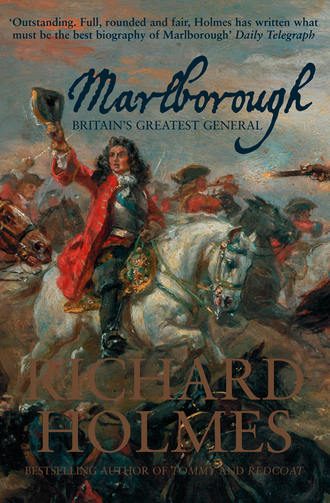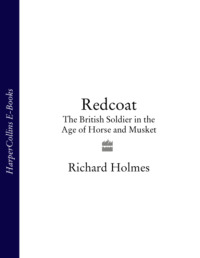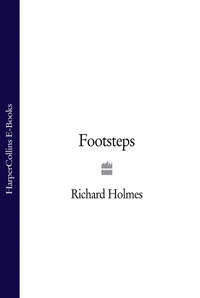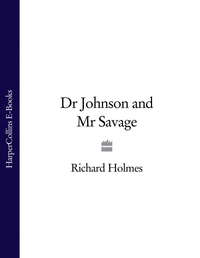
Полная версия
Marlborough: Britain’s Greatest General
Charles did not share the widespread mistrust of standing armies, and Gilbert Burnet maintains that lord chancellor Clarendon agreed that such a force was needed to protect the king from riots and risings.
And there was great talk of a design, as soon as the army were disbanded, to raise a force that should be so chosen and modelled that the King might depend upon it; and that it should be so considerable, that there might be no reason to apprehend tumults any more.20
However, the Earl of Southampton, the lord treasurer, feared that while the New Model’s men had been ‘sober and religious’ the king’s would perforce be brutal and licentious, and the probable instrument of royal despotism. One of Samuel Pepys’s drinking companions certainly agreed with him:
They go with their belts and swords, swearing and cursing, and stealing – running into people’s houses, by force oftentimes, to carry away something. And this is the difference between the temper of one and the other.21
Charles’s army was small – 6,000 strong at its peak – and it would have been a wise man who predicted that it would eventually grow into a force of European stature. There were many who argued, throughout his reign and beyond it, that the Trained Bands of the City of London and the county militias, their officers appointed by local potentates and their men selected by ballot from lists provided by parish constables, were sufficient guarantee of domestic security. On 1 January 1661, however, a small armed group of no more than fifty Fifth Monarchy men under ‘Venner the cooper’ seized the north gate of St Paul’s. A plucky watchman cried out that he was for King Charles. They replied that they were for King Jesus, and piously shot him through the head. Venner’s men went on to beat both a detachment of musketeers sent across from the guard on the Royal Exchange, and the lord mayor’s own troop of City militia, before making off to Highgate. Running short of food, they returned to the City on the fourth. It took the king’s Life Guard and ‘all the City Regiments’ to subdue them: ten were taken and twenty killed. Thomas Venner was wounded, but lived long enough for rope and bowelling knife.
Charles had already raised a regiment of foot guards commanded by John Russell, one of the Duke of Bedford’s grandsons and a steadfast Civil War royalist. The king had brought a Life Guard of horse across with him in 1660, but it had subsequently been reduced in size and the residue sent to Dunkirk. As a consequence of Venner’s rising the officers and men of Albemarle’s Coldstream regiment of foot were disbanded (thus meeting the letter of the agreement that specified that the old army was to disappear) and then immediately re-enlisted. In 1684 a royal ruling made this ‘new’ regiment junior to Russell’s 1st Foot Guards, but the Coldstreamers made clear their disapproval by adopting the motto Nulli Secundus, second to none. Members of the 1st Foot Guards helpfully translated this as ‘second to one’ or ‘better than nothing’.22 The Life Guards were brought back from Dunkirk and augmented into three troops – the King’s, the Duke of York’s and the Lord General’s, with a Scots troop raised soon afterwards. At the same time Aubrey de Vere, Earl of Oxford, raised a regiment of horse, properly the Royal Regiment of Horse Guards but known, from the colour of their uniforms, as the ‘Oxford Blues’. This was based on a parliamentarian regiment, brought up to strength with royalist volunteers.
This process gave Charles II guards, both horse and foot, and with them came the realistic prospect of preserving order in the capital and escorting the monarch when he travelled in the country. There were also a number of isolated non-regimented garrison companies in key strongholds like Portsmouth, Dover and Hull, all now commanded by officers of suitable royalist credentials. Although the small standing armies of each of Charles’s kingdoms were theoretically separate, ‘In practice,’ as John Childs tells us, ‘all three were interdependent and formed part of the same large whole. Soldiers from Scotland and Ireland were raised to serve on the English establishment whenever forces were needed for foreign service.’23
Charles expanded his army beyond this tiny kernel for two reasons. Firstly, there were the demands of his foreign policy, and as John Churchill was to find himself swept up in the wars that this provoked, we need to grasp its essentials. The treaty of 1661, which established the conditions for Charles’s marriage to the Portuguese Princess Catherine of Braganza, brought England the North African city of Tangier, intermittently under siege by the Moors, and it required garrisoning. Amongst troops raised for this dangerous task was the Queen’s Foot, which went on to become the 2nd of Foot, the Queen’s Royal Regiment, whose paschal lamb badge can still be found on the buttons of its lineal descendant, the Princess of Wales’s Royal Regiment. A brigade of one regiment of cavalry and two of infantry also served in Portugal itself in 1662–68.
Then there were forces needed for war on the Continent. A dominating influence across the whole of John Churchill’s active career was the desire of the French monarch Louis XIV to extend the borders of France and secure influence across a wider Europe. However, for much of Charles’s reign the government pursued a pro-French policy. This undoubtedly reflected Charles’s personal inclination. His mother Henrietta Maria was French, his sister Henriette-Anne was married to the Duke of Orléans, and his personal religious beliefs drew him strongly towards Catholicism. In 1670 the secret Treaty of Dover, pushed on by some of Charles’s advisers (including Winston Churchill’s patron Lord Arlington, who had succeeded the fallen Clarendon), provided for an alliance between Britain and France. Charles affirmed that he was ‘convinced of the truth of the Roman Catholic religion and resolved to declare it and reconcile himself with the Church of Rome as soon as the welfare of his kingdom will permit’. Louis XIV would send 6,000 soldiers to help him against any recalcitrant subjects, and would provide Charles with £140,000, half payable in advance of his declaration. Amongst the treaty’s other clauses was one which bound the two kings to declare war on the States-General of the United Provinces, and others which determined the arrangements for this war – including a generous annual subsidy for the British. Henriette d’Orléans visited her brother in 1670 and persuaded him to defer his declaration of Catholicity until after the war had begun.
In fact Charles did not need much convincing, for, with that finely-tuned survival instinct which his brother so signally lacked, he recognised that such a pronouncement would be profoundly unpopular, and he was reconciled to the Roman Catholic Church only on his deathbed. A bogus treaty, which excluded the awkward clause committing Charles to Catholicism, was signed in December by five of his ministers – Clifford, Arlington, Buckingham, Ashley Cooper and Lauderdale – whose initials conveniently made up the word cabal, or conspiracy, giving us some indication of what many of their contemporaries thought of them and their policy.24
As a consequence of this policy, a brigade of infantry served alongside the French army against the Dutch in 1672–78. It included the Earl of Dumbarton’s Scots Regiment, which was to become the Royal Scots, the 1st of Foot, and the senior line infantry regiment in the British army, rejoicing in the nickname ‘Pontius Pilate’s bodyguard’.* There was also the Duke of Monmouth’s Royal English Regiment, an Irish regiment under Sir George Hamilton (replaced, when he was killed at Saverne in 1676, by Colonel Thomas Dongan), assorted cavalry, and further infantry battalions which were broken up, on their arrival in France, to reinforce existing units. We shall see more of this brigade later.25
The government’s policy of war against the Dutch in alliance with the French was not popular, not least because many Englishmen regarded the Dutch as good fellow-Protestants who were, into the bargain, the doughtiest of adversaries at sea. England pulled out of the Third Dutch War in 1674, and with the fall of the cabal soon afterwards the Earl of Danby, the king’s new chief minister, gradually redefined foreign policy so as to align England with Holland and against France. Charles was uneasy about the arrangement, but his sister Henriette’s untimely death removed what might have proved an insuperable obstacle. In 1677 the Dutch stadholder William of Orange, fast emerging as the chief obstacle to Louis’ ambitions, married the Duke of York’s daughter Mary. The jocular Charles was on hand to help the happy couple to their bridal bed, and as he drew the curtains around it he improved the tender moment with his expert advice: ‘Now, nephew, to your work! Hey! St George for England!’26
On 31 December 1677 England signed a treaty with the Dutch, agreeing to work towards a general peace on the basis of French surrender of key fortresses in the Low Countries, to recall British troops from French service, and to send men to fight alongside the Dutch and their allies the Spanish, who were, through most of the period covered by this book, de jure rulers of the Spanish Netherlands, that broad and often contested strip of territory between France and Holland. A further treaty was not ratified by the English, and Charles then characteristically attempted to avoid both breaking his agreement with France and actually entering the war on the other side. Eventually, in 1678, a force of almost 18,000 men was ready, part of it composed of regiments recalled from French service, and part from regiments newly raised for the war. The force was disbanded in 1679 without having been in action, but the experience of getting it to Flanders, sustaining it in the theatre of operations and bringing it back to England was useful for the future. In addition to this expeditionary force, genuinely part of the British army, there were also British troops, including a high proportion of Scots, in Dutch service too.
We can already discern, from the very beginning of John Churchill’s career, the second reason for Charles’s expansion of his army. He was besieged by Civil War royalists, many of them awash with extended families, who sought places for themselves and their adherents as a reward for past services and, by unspoken implication, a guarantee of future loyalty. Although in 1661 Parliament had undertaken to raise £60,000 to pay former officers of the royalist armies, there was precious little available for those who had served as junior officers. John Gwyn had been a captain in the Civil War and then a lieutenant in the royalist army in Flanders before the Restoration. After it he found himself on half-pay in Dunkirk, in a garrison full of ex-parliamentarians, and with two of his ‘familiar associates’ decided to visit the governor and offer to serve as private soldiers. At that stage infantry regiments contained both pikemen and musketeers, and a gentleman would naturally prefer, as Shakespeare had put it, to ‘trail the puissant pike’.
Then I went with them to the Governor, as he was marching at the head of fifteen hundred men, and told him they were officers of His Majesty’s Regiment of Guards, gentlemen, and brave fellows; and that they and myself would own it an honour to take our pikes upon our shoulders, and wait upon him that day. He returned as many grateful expressions unto us, as if it had been the highest obligation that was ever put upon him, and he would not take us from our command.27
By the time Gwyn wrote his memoirs, though, he was serving as a gentleman trooper in the King’s Troop of Life Guards, then commanded by the Duke of Monmouth. Although a trooper in the Life Guards received four shillings a day, compared to the 2s.6d paid to a trooper in a line cavalry regiment, it is clear that Gwyn hoped for promotion, and that the prefatory letters opening his memoirs were (apparently fruitless) pleas for assistance. He told Charles II that he had ‘faithfully spent my prime years in your service’, and evidently hoped for more than a billet in the Life Guards. There were thousands of John Gwyns in the England of the 1660s (one contemporary survey identified 5,353 former officers), all clamouring for jobs, and the expansion of the army could gratify at least some of them.
Much as they might have resented the comparison, army officers had at least something in common with the keeper of Newgate prison, for their offices, like his, were generally bought and sold. Indeed, one historian has suggested that the purchase of commissions ‘operated to its greatest extent’ in the Restoration army.28 Any appointment or promotion required royal permission, and an officer either joining for the first time or being promoted paid a set fee to the secretary at war and negotiated the price payable to the officer he replaced. Commissions in units raised for short conflicts like the 1677–78 expedition were cheap but a poor long-term investment, while, at the other extreme, colonelcies of well-established regiments were hugely expensive. Charles gave Colonel John Russell £5,100 for the 1st Foot Guards in 1672, and then presented the regiment to one of his illegitimate brood, the Duke of Grafton, who had no military experience at all but rather enjoyed being a colonel.
The rules governing the purchase of commissions changed from time to time, and in 1684 the whole practice was outlawed, but with or without official approval it clinked cheerfully on. There was no reason why young men needed to understand their profession before buying their way into it: some young officers could not ‘relieve a guard without arousing the merry glee of spectators’. Moreover, there were many gentlemen ‘whom nothing but captaincies would contest’, thus leaving a residue of subalterns who frequently saw ignorant men buy their way in above them. One of the disappointed tells us that:
the subaltern … let him be never so diligent, faithful and industrious; nay never so successful too; and although he has spent so much of his own money in carrying arms … or in small posts, as would have bought a company; yet if he has not the ready – he must be sure to find one that has put over his head; and too often one that neither is, nor ever will make a soldier.29
However, the system, such as it was, was in a state of evolution, and during John Churchill’s career there were attempts to prevent the worst abuses: for instance, the commissioning of youths and children was theoretically banned in 1705. Churchill, as we shall see, had his own firm views on the subject, and it was at least in part thanks to his efforts that, between the reigns of Charles II and George I, a career in the army came increasingly to offer genuine professional advancement rather than sporadic achievement based on money and patronage, inflated by wartime promotion but imperilled by peacetime reductions. Yet throughout the period many officers, especially those in the most recently raised regiments, which would be the first to go on the outbreak of peace, were uncomfortably aware that the spectre of compulsory retirement on half-pay always beckoned:
This week we shine in scarlet and in gold
The next, the cloak is pawned, the watch is sold.
Court and Garrison
None of this was yet of much concern to Ensign Churchill of the 1st Foot Guards, commissioned without purchase by the kindly intervention of James, Duke of York. He carried his company’s colour (until about 1690 each company of foot had a colour of its own, and thereafter most regiments had a royal colour and a colonel’s colour) and watched the pikemen and musketeers of his company, now in the proportion of about one pikeman to four musketeers, stepping through their stately evolutions. Their captain enjoined them to ‘Have a care: shoulder your pikes and muskets; to your right hand, face; to your front, march.’ Off they stepped, stiff-legged, slow, and mighty proud of themselves, with the captain and half the musketeers at their head, the ensign and his colour in the middle with the pikes, then the remainder of the musketeers and last of all the lieutenant, with a keen eye on the alignment of the ranks and the behaviour of the men.
The foot guards were quartered in and around the capital, even then easily the largest city in the kingdom, with a population of more than 300,000 souls (almost one in sixteen of the total English population of over five million), and growing all the time to outstrip Paris in 1700 and Constantinople in 1750.30 It straggled along the north bank of the Thames, then crossed only at London Bridge, though there was a ferry between Westminster and Lambeth, long replaced by Lambeth Bridge but remembered by Horseferry Road, that now leads onto it. The City itself, the ancient commercial heart of London, comprised the original square mile bounded by the Roman walls, with Blackfriars to its west and Southwark just across London Bridge. To its west lay Westminster, approached by the Strand, which took the traveller to Charing Cross, whence King Street ran slightly north of the line of the modern Whitehall to Westminster Hall, where Parliament met.
The palace of Whitehall, frequented by John Churchill for much of this period, was the monarch’s principal residence. It stretched along the river for about half a mile, just a little to the north of the present Embankment, which was reclaimed in the nineteenth century. The traveller arriving by King Street from the City would enter the precincts of the palace by the Holbein Gate, with the Banqueting House to his left and a muddle of galleries and apartments around the little Pebble Court behind it. As he passed on through Holbein Gate our traveller would cross the north side of the Privy Garden, with a run of buildings on his right which from 1664 included quarters for a permanent guard of fifty private gentlemen of the Life Guards. Entry to St James’s Park, where the king loved to walk briskly with a selection of his dogs and to which access was strictly controlled, was monitored by these troopers, and passes to the park were much coveted.
This cavalry guardhouse stood for nearly a century; the present one, called Horse Guards like its predecessor, dates from the 1750s. Leaving through King Street Gate, and now conscious of Westminster Hall and the Abbey filling his horizon, the traveller would see a scattering of more apartments and the royal bowling green to his left. The whole place was a mixture of medieval and more modern, with Inigo Jones’s great Banqueting House, built for Charles’s grandfather James I to replace an earlier building destroyed by fire, as its most striking feature.
Court life mixed formality and practicality. Samuel Pepys was predictably gratified to see a royal mistress’s petticoats hanging out to dry in the Privy Garden, though the vision gave him rather lurid dreams. Privacy could be rare. When Margaret, wife of John Churchill’s future political ally Sidney Godolphin, was dying of puerperal fever in 1678, her shrieks rang out right across the palace’s riverfront. Many marriages of the period were made by conniving old men in smoky rooms, but this had been a love-match, and the distraught Godolphin wrote that his loss was ‘never to be supplied this side of heaven’.31 He never remarried.
John Evelyn admired Charles, that ‘prince of many virtues’, but complained that:
He took delight in having a number of little spaniels follow him and lie in his bed-chamber, where he often suffered the bitches to puppy and give suck, which rendered it very offensive, and indeed made the whole court nasty and stinking.32
Royal mistresses, in ‘unimaginable profusion’, according to the straitlaced Evelyn, might be ushered in via Whitehall Stairs from the river, or up the backstairs from Pebble Court, with the more permanent fixtures actually housed within the palace, though safely away from the queen’s apartment, just off the gallery where Pebble Court and the Privy Garden met. The place was full of courtiers, place-holders and hangers-on, sleeping (and sometimes pissing) where they could, and hoping to make themselves indispensable to Charles. He was ‘easy of access’, and
had a particular talent in telling a story, and facetious passages, of which he had innumerable; this made some buffoons and vicious wretches too presumptuous and familiar, not worth the favour they abused.33
Gilbert Burnet was less impressed by the monarch’s skill as a raconteur. ‘Though a room might be full when the king began one of his stories,’ he wrote, ‘it was generally almost empty before he finished it.’34
This royal rabbit-warren was badly damaged by fire in January 1698, and the Banqueting House was one of the few buildings to survive. Christopher Wren was told that ‘His Majesty desires to make it a noble palace, which by computation may be finished in four years.’ But there was never enough money, and although ‘the spectre of a grand palace at Whitehall haunts English architectural history in the seventeenth century’, the ghost never assumed substantial form.35 After the destruction of Whitehall the court moved to St James’s and Kensington Palaces in London. Charles liked Windsor Castle, with its romantic wooded surroundings, and William III was very taken by Hampton Court, where he was able to create gardens like those he so loved at Het Loo.
As a page John Churchill was a regular visitor to the Duke of York’s apartments, at the palace’s south-west corner. He also called on his second cousin once removed, conveniently lodged nearby. Barbara Villiers had been born in 1640, the second child of Lord Grandison, and in 1659 she married the lawyer Roger Palmer, later Lord Castlemaine. She had already enjoyed a vigorous affair with the Earl of Chesterfield (‘the joy I have of being with you last night, has made me do nothing but dream of you’), and in February 1661 she gave birth to her first daughter by Charles II. John Churchill was often to be found in her lodgings (alongside the King Street Gate till 1663, and near the Holbein Gate thereafter), eating sweets and chatting. Winston S. Churchill is at pains to persuade us that:
Very likely she had known him from his childhood. Naturally she was nice to him, and extended her powerful protection to her young and sprightly relation. Naturally, too, she aroused his schoolboy’s admiration. There is not … the slightest ground for suggesting that the beginning of their affection was not perfectly innocent and such as would normally subsist between a well-established woman of the world and a boy of sixteen, newly arrived at the Court where she was dominant.36
Much later in Marlborough’s life, when his enemies were anxious to do him whatever damage they could, the author of a scurrilous account of the court life of the period suggested that even at this stage Barbara Villiers aroused a good deal more than John Churchill’s admiration. We cannot be sure when his relationship with Barbara became more than neighbourly, and it may well be that things began perfectly innocently, as Winston S. Churchill suggests. But we can be sure of two things. Firstly, John Churchill was not simply one of the most attractive men of his day, but became an ardent lover whose correspondence with his wife testifies to a healthy sexual appetite, even if we cannot produce a respectable source for Sarah’s enthusiastic: ‘My Lord home from the wars this day, and pleasured me, his boots still on.’37 Secondly, his relationship with Barbara did indeed blossom into an affair, and she was to bear him a daughter, also called Barbara, in July 1672.
To the Tuck of Drum
By that time, however, John Churchill had most certainly become a man of the world. It was common for young officers to serve on campaign or on warships of the fleet as volunteers, even if their own regiments were not involved. There is circumstantial evidence that in 1668–70 he served in the garrison of Tangier. Some contemporaries believed that either the roving eye of the Duchess of York or Churchill’s relationship with Barbara Villiers caused tension at court, and that ‘the jealousy of one of the royal brothers was the cause of his temporary banishment’. Archdeacon Coxe thought the story absurd, for Churchill was not away from court for long, and was, so Coxe argued, recalled by the Duke of York.38









